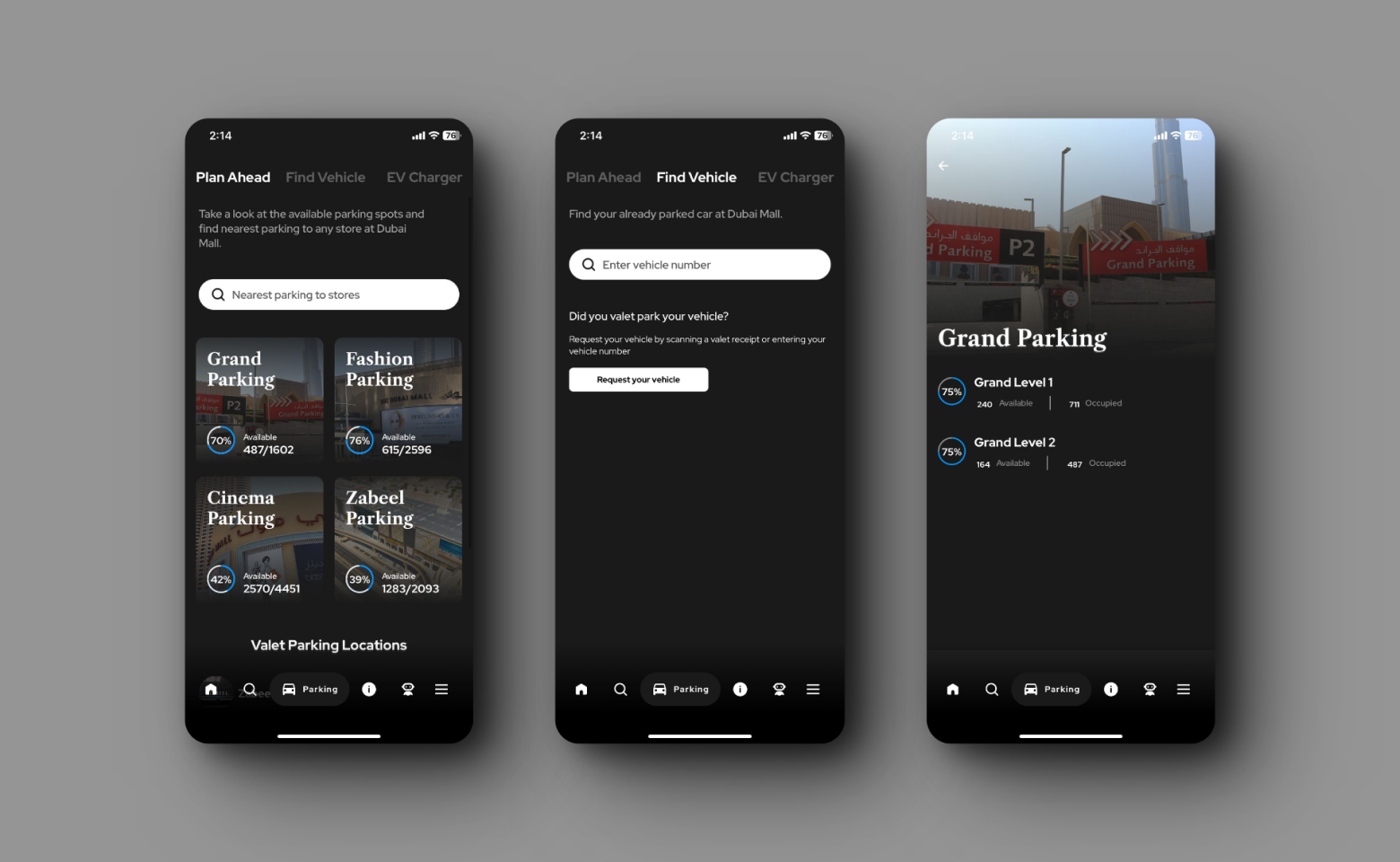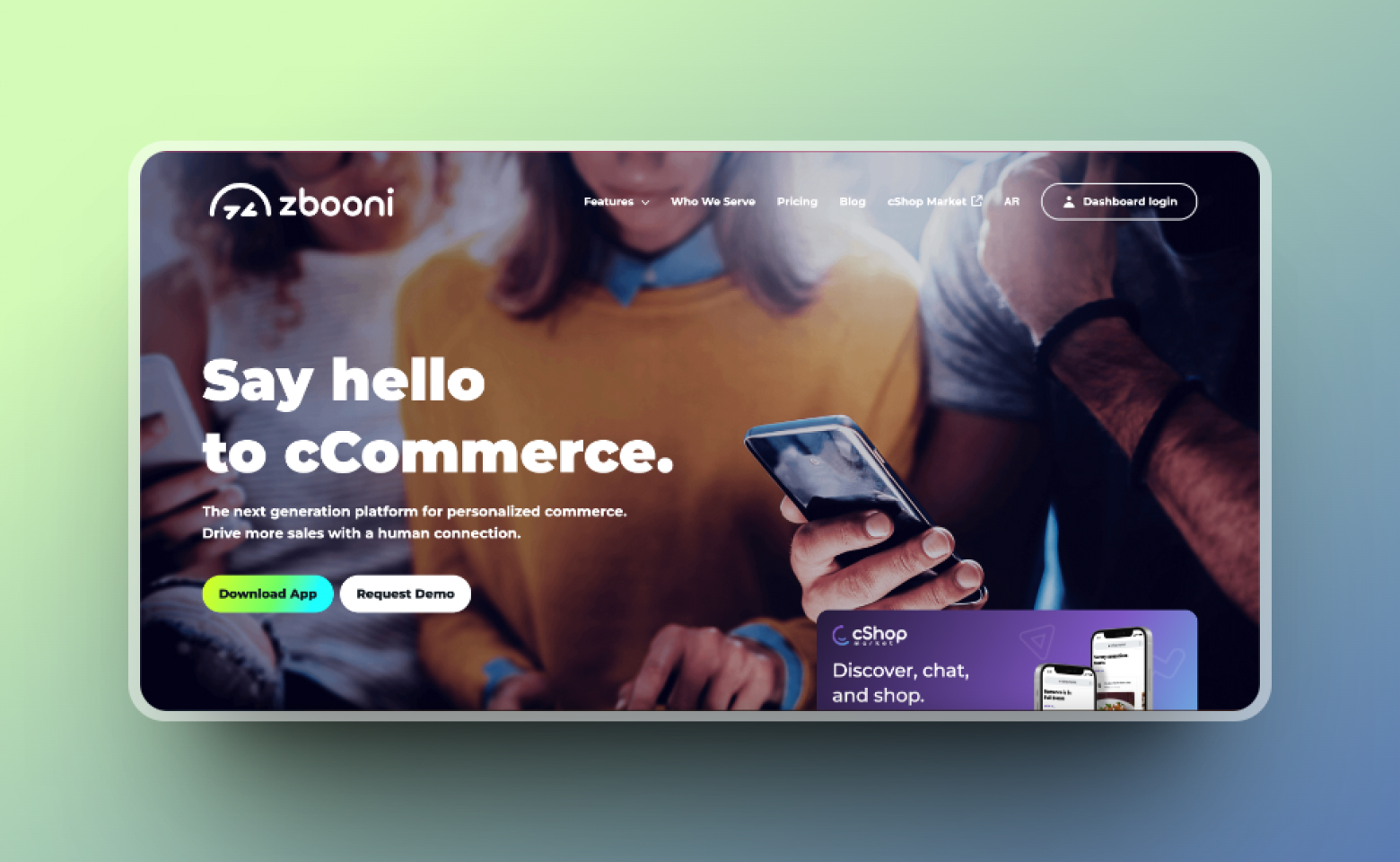Unlock Your Business Potential with Expert Tech Solutions
Why Choose Our Software Development Company?
200+
Skilled Professionals
150+
Proud Projects
50+
Clients globally

Take your business to the new heights with Experts.
Driving Growth for Enterprises and SMEs Alike
Exploring Infinite Horizons of Technology






What Customers say about us
Collaborations and Partnerships to Help You Scale
Technologies we use for clients

















































Gain valuable insights

7 Computer Vision Use Cases in E-Commerce for 2024
Modern technologies are transforming the way people shop online by influencing their purchase decisions. With 88% of customers attributing product images to a great shopping experience, the use cases of computer vision in e-commerce continue to grow.
Computer vision allows retailers to provide buyers with new ways to search for products. Simultaneously, sellers can leverage automated inventory management, quality control, and much more. The technology is a form of artificial intelligence and works by deriving meaning from digital images just like humans - sometimes even better. It replicates the way we visualize products and performs image recognition, distinction, and classification using AI.
In this post, we discuss 7 computer vision use cases in e-commerce. Read on to find out how cutting-edge AI technology is reshaping the digital landscape.
The Role of Computer Vision in E-commerce
Customer expectations are changing, and so are retail businesses. The industry now recognizes the need for displaying interactive content in the form of product images and descriptions to improve the customer experience.
Computer vision is mostly dependent on high-quality images uploaded by sellers and customers on the internet. Digital marketplaces use it to match the items a customer searches for - and quickly provide them with the right results. Not only that, but computer vision also helps verify the uploaded images to determine the quality of the product in question. As a result, shoppers can feel secure knowing that the platform is offering the right products.
The use of AI makes product search a breeze as you can display images dynamically to deliver an exceptional retail experience. You can automate repetitive tasks and save money. As AI enables computers to see and perceive images like humans, online shopping will become much more convenient in 2024. It improves engagement and you can have more loyal customers.
Use Cases of Computer Vision in E-Commerce
Visual Search Capabilities
Up until a few years ago, online shopping started with a text-based search query. Users had to go through a lot of products to find what they wanted. However, the introduction of AI technology has changed that. Visual search is one of the biggest leaps we have seen thanks to computer vision in e-commerce. It is an entirely new way of searching for products online.

Amazon’s Shop the Look interface
Users can simply upload a photo of the product they want to buy, and AI brings up all the relevant items in the store. A survey showed that 62% of Gen Z and Millenial customers in the UK and US want visual search capabilities in their online shopping journeys.
Even though it might not have made its way into all e-commerce stores yet, those who have experienced it do vouch for it. Amazon and eBay are two big names that leverage computer vision for visual search. Amazon’s StyleSnap provides the best-matched results for products when users upload a photo, and eBay customers can also search among 1.1 billion products using photos instead of text-based queries.
Automated Inventory Management
Inventory management is something that every retailer wants to ace. However, the days of manual inventory counts and stock management are over. Since your customers expect swift delivery within a day, you need to be on top of your inventory game at all times.
Here, computer vision helps you meet customer demands and maximize your sales. It allows you to analyze visual data from your inventory and order stock accordingly. The visual analysis helps you stay ahead of the curve by maintaining a steady stock level. Whenever a new order is placed, you don’t have to keep your customer waiting. You don’t have to worry about running out of stock or overstocking your warehouse.
Automated inventory management with computer vision helps create a seamless shopping journey. Neither do you miss any sales opportunities, nor do your customers face any delays. Automating the inventory management process also streamlines replenishment operations to ensure that popular products are always in stock.
Augmented Reality Shopping
In retail, augmented reality shopping has taken the e-commerce experience to a whole new level. AR with computer vision goes beyond virtual try-on experiences to completely transform the way customers view their products.
In augmented reality, computer vision recognizes objects in visual data through object detection. It uses object tracking to understand movements and count objects, and Simultaneous localization and mapping (SLAM) to localize an AI bot on a map. These complex processes collectively make up the immersive shopping experience we see on AR shopping apps.

Features like augmented product displays and virtual showrooms make it easier for customers to understand what they are paying for. They can explore the product in detail, compare the different options, and even take a virtual walk-through of the store.
Computer vision in AR also provides you with valuable insights into customers’ preferences. By incorporating AR into your e-commerce store, you can create a dynamic shopping environment and enhance the customer experience.
Quality Control and Inspection
Businesses in the retail industry compete on various fronts, but nothing beats quality products. When it comes to fashion, electronics, or other products that are assessed by visual characteristics, you need to ensure quality standards.
Thankfully, quality control is another use case of computer vision in e-commerce. Here, computer vision is used for visual inspection of products at different stages of the supply chain. You can incorporate it at the manufacturing phase, the distribution phase, and when the product reaches your store shelves.
The quality control process involves computer vision algorithms that detect imperfections or defects in products. They perform visual inspection and compare products to a set standard to determine whether they meet the quality requirements.
Incorporating computer vision for quality control allows you to improve customer satisfaction and lower your return rates. When customers get the same quality of products from your brand, they begin to trust it and become loyal customers.
Customer Behavior Analysis
Moving on, here is another important use case of computer vision in e-commerce. In retail, customer behavior analysis is the key to improving the customer experience. The more you know about your customer's preferences, the better you can assist them.
In this use case, computer vision analyzes customer data to provide you with valuable insights to understand their shopping behavior. Integrating this technology into your e-commerce platform allows you to track customer activity across the store and understand how they interact with each aspect of your store.
This includes product pages, the checkout page, the homepage, and more. However, computer vision is not limited to your online store only. In the physical store, it uses heat map technology to detect real-time movements and assign colors based on traffic volume. This helps retailers understand which sections of the store are more crowded and how they can optimize product placement, store layout, and more.
Shipment and Logistics Optimization
The last stages of the supply chain are the most crucial for retailers, as they can make or break customer trust. In shipment and logistics, computer vision is used to extract data from package labels and detect damages to parcels. It helps quickly identify and sort parcels depending on your business constraints.
The AI system can sort by size, destination address, shape, or category of products. You can track packages in real-time within your store and while they are on their way to the customer. Real-time tracking with computer vision helps eliminate instances of misplaced items.
Moreover, the technology helps you automate and simplify various operations in the dispatching and shipment of products. On a larger scale, computer vision can monitor activities on ports to detect suspicious activities that lead to misplaced parcels.
Product Recommendations
Product recommendations are one of the best ways to engage customers online. Every time a shopper visits your e-commerce store, they see products on the homepage before they even begin their search. Computer vision makes this possible by analyzing the users’ search history, items they’ve previously purchased, and similar data from millions of other users.
According to a survey, 91% of customers are more likely to shop with brands that remember their shopping history and provide relevant suggestions.
In the e-commerce use case, computer vision algorithms process large volumes of user data to provide accurate personalized recommendations. As a result, your customers feel that your brand takes care of their preferences and displays highly relevant content. Finding the right products on the homepage of an online store also means that customers have to spend less time searching.
With the help of pattern-matching algorithms, computer vision analyzes customers’ online journeys to determine the key areas where they might need helpful suggestions. Sometimes, users simply browse through your store without the intention of buying anything. Here, you can convert them into customers with the right product recommendations. Not only that, but these kinds of suggestions can also help upsell and cross-sell slow-moving items.
Benefits of Computer Vision in E-Commerce
Beyond the common use cases, computer vision exceeds expectations to deliver an enhanced customer experience. Starting from product classification based on visual attributes, and going towards predictive analytics, the technology has transformed e-commerce for the better.
- Brand detection
Computer vision utilizes advanced algorithms and machine-learning techniques to identify retail brands in images and videos.
- Effective market analysis
With the help of visual detection, brands can understand the popularity of a given product in the market and restrategize.
- Predictive Analytics
The technology analyzes customer behaviors and preferences to create and display personalized product recommendations.
- Enhanced customer experience
Your customers can find their products by uploading images and don’t have to go through a long list of products to find what they need.
- Operational efficiency
Computer vision helps identify efficient routes for the supply chain and makes it easier for you to manage your e-commerce operations.
- Security
With fraud detection capabilities, computer vision helps eliminate the risk of misplaced items, unscanned items, and employee theft.
Embracing the Future of E-Commerce
Computer vision and the other subsets of AI have quickly become a necessity in the e-commerce landscape. With customers expecting a smooth omnichannel shopping experience, the applications of computer vision seem to be increasing quickly. In the retail sector, the technology has already automated checkouts, monitored queues, and analyzed foot traffic.
The buzzing technology has come out of the research phase to become a highly useful e-commerce tool. While there is no comparison between an AI-based system and a manual process, the benefits of computer vision in e-commerce retailers are too obvious to ignore.

The Ultimate Guide to AI App Development Using Generative AI
App development has come a long way in recent years. As AI pushes the boundaries of innovation in software development, generative AI app development has become one of today's biggest buzzwords. In fact, it has the potential to boost business profits by up to $4.4 trillion a year.
AI changes how we conceive and build our apps by unlocking unimaginable possibilities. Using large language models, developers can create intuitive in-app experiences. You also get to personalize user experiences with enhanced creativity.
Read on to find out how the ground-breaking AI technology enhances app development.
How Generative AI differs from other AI technologies
AI has been here for quite some time in the form of machine learning and computer vision. However, these technologies are limited to analyzing and classifying datasets. Generative AI is capable of creating new content based on existing data. This can be in code, text, images, video, music, and more.
Generative AI is currently being used for the development of innovative apps in different industries.
Generative AI can be used to generate code for mobile apps, which can save developers a lot of time and effort. For example, DhiWise has introduced the new feature “WiseGPT” which analyzes the entire codebase to produce personalized production-ready code without writing prompts. The other is the “GitHub Copilot” tool that can generate code snippets and even entire functions based on natural language prompts.
The Role of Generative AI in App Development
Generative AI offers an unparalleled ability to test apps for bugs and errors. AI-based systems not only identify security risks but they can also be used to write code for a wide range of applications.
Enhancing user experience with Generative AI
When it comes to online websites and applications, user experience is crucial. You need to have seamless transitions between different responsive, user-friendly pages. Here, generative AI can automate repetitive tasks in app development.
As a result, it can solve problems without human input. You get an exceptional user experience with a bug-free application that doesn’t require any expert developer insights. That said, the effectiveness of generative AI apps depends on how well you train them.
Personalization and customization through AI
Personalized content is the way to go in the modern world. And nothing creates personalized and customized content like generative AI. By analyzing user history including search and preferences, AI creates personalized recommendations. This enhances the user experience by creating more opportunities for customer engagement.
Generating content and creative elements automatically
When humans work in cross-functional teams, the output is great. Imagine AI doing the same, except with much higher efficiency. Generative AI raises the bar of creativity and innovation. It produces content that would take us too much time to create. Plus, we would need to use various methods and tools to come close.
Automated content generation takes app development to a whole new level. You can now uncover new concepts before even creating the application. Using novel patterns, styles, and combinations, AI allows you to create perfection.
Improving app development with predictive models
Predictive analytics is a field of AI that allows developers to optimize app functionalities. By factoring in the time, effort, and cost of app development, it provides a clear pathway. You can easily identify potential risks and hurdles. It also allows you to eliminate bottlenecks to enhance the functionality of your application. These measures reduce the likelihood of issues arising during the development life cycle.
Getting Started with Generative AI App Development
Before getting started with generative AI app development, you need to know its basics. The best practices allow you to be more productive in the process by making it smooth. Whether it's your first time or you’ve been working with AI, here are the steps for app development with generative AI:
Gather high-quality data
No matter how powerful an AI tool is, it still needs to be trained using existing data. The quality of this data determines how well generative AI will perform. Therefore, the first step is to gather error-free and well-structured data. Make sure it does not have any inconsistencies or biases. And of course, it should be relevant.
Training your AI model using high-quality data yields accurate outputs. This makes app development with generative AI worth your while. And your app performs the intended functions with maximum effectiveness.
Choose the right tools and frameworks
Choosing the right algorithms and AI models is among the critical aspects of using generative AI. You need to ensure that you choose the right one based on your specific use case. For example, if you want to generate natural language texts, you can work with algorithms like GPT-4. But if you want images as output, you need a deep learning model like GANs. If you make the right decision, your generative AI app will perform effectively and yield quality outputs.
Understand the data requirements for training AI models
Moving on, you need to ensure that your AI model operates at maximum efficiency. For this, technical know-how of data requirements is crucial. You can adjust the AI’s learning rate, batch size, and epochs, and even regularize it. Here,
- Batch size means how much data it can process at a time.
- Epochs mean the number of times it learns from the data.
- Regularizing means you can prevent it from overthinking or overprocessing data.
Fine-tuning your AI models results in high efficiency of the application.
Building Your First Generative AI App
Building a generative AI app is a complex process that requires you to follow a unique set of steps. Here’s how you can get started with your first app:

Selecting and preparing your dataset
The process of developing an AI app starts with data. You need to identify the right sources to extract the datasets you’ll be using. This can be done using databases, web scraping, sensor outputs, and APIs depending on your requirements. This is a crucial step as the quality of the data directly affects the performance of your AI model.
Apart from data sourcing, you also need to pay attention to data diversity. The more diverse your data, the better the AI will perform. Its outputs will be more unique if you train it with different scenarios, modalities, and environments.
Training your Generative AI model
This is the step where your efforts shine through. Using the data you’ve gathered and cleaned, you need to train your generative AI model. You’ll be using deep learning and neural networks to feed the prepared data to the AI. It then learns to identify and emulate data patterns.
When the initial model is sufficiently trained, you can proceed to fine-tune the AI. Here, you can go deeper into specific tasks to generate the desired outputs. For instance, you can fine-tune your AI model to create poetry. You’ll have to train it on an extensive dataset of poetic content. Here, you can also deploy techniques like differential learning rates. This process takes different layers of the AI through different learning rates.
Integrate the AI model into your app
Once your AI model is ready to go, the next step is to integrate it into your app. For this, you need to develop APIs or connectors. APIs act as a bridge that fills the gap between your app and the generative AI model. Then, you need to design workflows to ensure that the data generated by AI is integrated into your existing processes. Frameworks like FastAPI and Flask are commonly used to deploy APIs with AI models.
Testing and optimizing app performance
Using real-world conditions and comprehensive testing techniques, you need to test the AI app performance. This step helps you determine whether your training in the AI model has been fruitful.
Testing an AI model for performance requires validation and data metrics. With metrics like the ROC curve, AUC score, and error analysis, you need to assess the quality of the AI model's outputs. Moreover, you can compare the outputs with benchmark models to see where your AI model falls behind in terms of accuracy and performance.
Advanced Techniques in Generative AI App Development
Improving Model Accuracy and Efficiency
An AI model is like a work in progress. You can keep making changes and updates to tweak its performance. In the case of app development, you can improve your AI model with the following techniques:
- Retrain the model on better data: You can use newer, more accurate data to retrain your AI. This helps improve performance as the outputs are based on the data being fed into the model.
- Change the way you deploy the model: Sometimes an AI model can struggle to perform well if it isn’t hosted on the right platform or connected to the right hardware.
- Source code enhancement: Some applications are just poorly designed and implemented right from the start. You need to review the source code to make the necessary improvements.
Scale your Generative AI app for a larger audience
Like any other tech solution, AI applications also need to be scalable for future use. Scalability challenges are common in AI app development. For instance, the size of datasets used to train the AI model, the sources used, and the deployment strategy need to be considered.
To make your generative AI app scalable, you need to:
- Ensure that you standardize the development and deployment processes
- Dedicate team efforts to tasks that they know best
- Utilize tools that support creativity, efficiency, and security
- Use development methods that allow updates for the future data
Ethical Considerations and Best Practices
For quite some time now, ethical concerns have been raised against generative AI. The most notable concerns like bias and racism were seen when OpenAI’s ChatGPT was first released. For you generative AI app development, you need to consider the following best practices:
- Bias check: Your AI application needs to be checked for unwanted biases that it may have picked up while training on different datasets.
- Fairness: Your AI model must not discriminate or generate biased outputs that negatively impact different user groups
- Anonymization: You need to take care of data privacy when user data is involved. So its important to anonymize your inputs and outputs at all times
Ensure privacy and security in AI-powered apps
Speaking of privacy, there are also reports of concerns related to data encryption. You need to monitor your app’s performance to identify vulnerabilities. Cyber attackers try to take advantage of the same AI capabilities in a negative way. For this reason, you must never include credentials and tokens in the code.
Apart from data encryption and authentication mechanisms, you must implement ongoing vigilance systems to avoid security breaches.
- Create ethical usage guidelines for your AI app.
- Use techniques like adversarial training to restrict bias
- Routinely monitor your AI app’s performance
- Identify and remove fake content, news, and images.
Best practices for transparent and responsible AI usage
Once the ethical and privacy concerns are addressed, you also need to consider transparency in AI usage. For this purpose, you need to implement the following best practices:
- Documentation: Create detailed descriptions of the AI models’s capabilities, its limitations, and how it is expected to perform.
- Feedback loops: You need to have open channels to discuss and mitigate any concerns and questions arising from stakeholders.
- Anomaly detection: Create systems to identify and take care of unintended behaviours or harmful outputs of the AI app.
- Guidelines and policies: The guidelines and policies for AI use must be updated each time a new feature is added or whenever the AI is retrained.
Navigate legal considerations in AI app development
In today’s day and age, the last thing you would want is a non-compliant AI solution. When it comes to legal considerations, you need to look at the following factors:
Copyrights: Businesses have started to use AI applications to create copyright content. As copyrights only protect content created by humans, this causes legal concerns. You need to ensure that your generative AI app cannot be used to create copyright content.
Confidentiality: Similarly, users and businesses are using AI tools for processes that involve personal information. To avoid legal consequences, you need to ensure that the personal data is either anonymized or used safely.
GDPR compliance: According to the GDPR, you need to define the data subjects and the purpose for gathering data. If you are unable to define the purpose, you cannot proceed with the training of your AI models.
The Future of Generative AI in App Development
AI technologies are developing at an alarming rate. Here is what the future holds for AI-based app development:
Emerging trends and technologies in Generative AI
Based on OpenAI’s latest update called GPT-4 Turbo, the system has two core improvements. One is its ability to ‘pull from a newer database of information’. And the second is its promise ‘to follow instructions better’. This gives us an idea of how fast AI is growing and improving.
AI is already working with features we expected it to perform yesterday. So it’s safe to say that the future is already here. AI can now analyze extensive documents and provide you with a summary. This is because it can now support up to 128,000 tokens of context.
That’s not all, as GPT4 Turbo now also has new API assistants. These are aimed at simplifying the creation of AI-driven apps. You will get capabilities like a Code Interpreter, Retrieval, and improved function calling. For app developers, these features are absolute game-changers.
Predictions for the future impact of Generative AI on app development
According to Forrester, ‘generative AI is accelerating the pace of innovation’. If there is going to be a challenge, its going to be navigating the risks of AI. This is because of the exponential rate at which AI is learning. That said, there is good news too. AI will unlock higher levels of productivity in the years to come.
- By 2026, generative AI design will automate 60% of the design effort for developing new websites and mobile apps.
- By 2027, 15% of applications will be automatically generated by AI without human input.
The same research suggests that by next year,
- ‘40% of enterprise applications will have embedded conversational AI, up from less than 5% in 2020’.
- By 2025 ‘30% of enterprises will have implemented an AI-augmented development and testing strategy, up from 5% in 2021.’
Key Takeaways
In summary, generative AI has tremendous potential to accelerate application development. It suggests code, identifies bugs, and even refactors lines of code. You can command it to write simple applications to speed up app development. Not only that but you can also perform quality checks of your existing code.
Combined with the innovative ideas brought forth by generative AI, you can achieve higher customer satisfaction. The best part is that generative AI applications are built without ever gathering any requirements.

5 Best Shopify ERP Integration Solutions for 2024
As an e-commerce business, you understand the importance of operational efficiency. So you optimize your order fulfillment process by automating a labor-intensive workflow.
Thankfully, your Shopify e-commerce store integrates with ERP software to give fruitful results. This transformative move consolidates all your business processes in one place. You get better financial oversight, streamlined operations, and improved inventory management.
This article helps you choose the best Shopify ERP integration without any research. Our top 5 picks leverage advanced technologies to meet evolving e-commerce needs. Read on to find the answers you’ve been looking for.
Why You Need to Integrate Your Shopify Store with an ERP Solution?
Without a Shopify ERP integration, your Shopify store handles inventory, orders, and payments. In contrast, your ERP takes care of the supply chain, accounts, and HR.
Integrating your ERP solution with your Shopify store unlocks higher operational efficiency. The integration synchronizes data from your e-commerce store and all other business operations. You can:
- Perform data entry across all channels
- Access all your data and information in one place
- Manage supply chain and inventory
- Handle accounts, HR, payable, and other operations
- Process orders and payments
Challenges Faced without a Shopify ERP Integration
Let’s say you are running your ERP independent of your Shopify store. You have to manually manage your inventory counts and update them in the ERP system. Then, you have to insert the same information in your e-commerce store.
When your business grows and sales go up, manual data entries will increase. With more items in your inventory, keeping a manual count becomes labor-intensive. This leads to inventory discrepancies and manual data entry errors. Moreover, your eCommerce operations become inefficient and difficult to scale.
How ERP Integration with Shopify Gives You a Strategic Advantage
An e-commerce business has numerous operations running simultaneously. Imagine having complete oversight and control over each of them. That’s the kind of power you get by integrating an ERP with your Shopify store.
Real-time Data Analysis
You can analyze sales trends and, expenditure patterns, and calculate profit margins using your ERP. It can generate financial reports automatically, saving you time and money. Modern ERP solutions offer advanced real-time data analysis features. This means you can take full control over your eCommerce finances. All you need to do is integrate the ERP with your Shopify store.
Automation
E-commerce businesses have to process and move large amounts of data each minute. According to 67% of organizations, ease of use is one of the most important features of an e-commerce platform. This is made easier with the use of an ERP system. Leveraging automation, you can streamline data exchange between different channels and touchpoints. This eliminates human errors in customer data, shipping details, inventory, and accounting.
Centralized Control of Business Processes
What’s better than having all your business data and communications under one platform? A Shopify ERP integration centralizes your store data and ensures hassle-free communications. This means all departments and channels can use real-time data and enable flexible solutions. Without this integration, every department manages its data separately.
As a result, when teams collaborate, there is the hassle of duplicate data and repetitive requests for information. With an ERP integration, you can create a secure, efficient, and error-free business workflow.
Choosing the Right ERP Integration for Your Shopify Store
Like any other business solution, ERP integrations are available in abundance. However, choosing the right one is the key to enhancing workflow efficiency. So, the following are the factors you need to consider for a successful integration.
Compatibility
First, you need to know whether the ERP system is compatible with your ecosystem. It needs to align with your business processes and goals. For instance, if your business has a high order volume, you’ll need a more efficient system.
It should be able to process large data volumes to fulfill orders quickly. You also need to determine whether the ERP system offers industry-specific features. The more the solution is tailored to your specific industry needs, the better.
Scalability
You’re not running your e-commerce business to stay where you are. Tomorrow, the business will become an enterprise. So, scalability is one of your top priorities. The ERP integration you choose must be able to cope with the changing volumes of data.
It should come with the necessary upgrades to adapt as your business grows. This means having technical support and continuous updates to the system. Not to mention, the process of updating the ERP should be easy for your teams.
Customizability
Not all Shopify integration solutions support the customizations on your e-commerce store. If you’re the kind of brand that loves customization, you must consider the right solution. Some regular integration strategies won’t work for you.
In that case, you need to consider tailored ERP solutions that allow a certain degree of customization. That way, you can get the most out of your Shopify ERP integration.
Support
Like any other tech solution, ERP software is often too complex to understand. Not everyone operating the system will be an expert. So you need to consider a service provider that offers reliable support. This includes technical support, training, and customer support.
You must be able to get assistance in setting up and using the integration effectively. But that’s not all. When it comes to streamlining your business processes, customer support plays a huge part. Consider this your top priority if you want to smoothen your integration process.
Cost
Initially, you might feel that investing in a new ERP integration solution is adding to the cost. However, in the long run, you will see that it's a fruitful investment. You get full control over your inventory, which allows you to order supplies efficiently. You only spend on what is needed.
That being said, you still need to consider the best value for money. Choose an ERP solution that offers the best price for features that fulfill your requirements. At the end of the day, it’s your business that matters.
Adaptability
With artificial intelligence reshaping e-commerce integrations, adaptability is key. You need a solution that works - both now, and in the future. With AI and machine learning, customer engagement and data analytics will be better than ever. Invest in an ERP solution that is designed to cope with these future trends.
5 Best Shopify ERP Integration Solutions for 2024
XStak E-commerce ERP
XStak is an all-in-one, self-service ERP integration solution for e-commerce businesses. It transforms your business with omnichannel capabilities through multiple productivity modules. You get more than 50 integrations with the best ERP and e-commerce solutions. That means you can seamlessly integrate and customize your Shopify store.
What’s more? XStak’s cloud-native and modular architecture makes it a scalable and hassle-free solution. A powerful cloud-based POS, coupled with an omnichannel order management system keeps you ahead of the competition. You also get marketing, payments, and business intelligence tools with a transaction-based pricing plan.
Inventory management is a breeze with real-time, multi-location synchronization of online and offline channels. The integrated warehouse and logistics management system automates order packing and delivery. Whether you consider scalability, customization, or support, XStak checks all the boxes. And it also prepares your business for the future with an AI-driven e-commerce assistant.
Dynamics 365 Business Central
Dynamics 365 is a cloud-based solution by Microsoft known for its CRM capabilities. It offers various tools for marketing, sales, project management, and marketing. With financial tracking and project service automation, you can streamline your business processes.
The ERP integration solution goes beyond basic CRM capabilities to offer data-driven insights. As a result, you can improve efficiency with the help of predictive analytics. If service automation isn’t enough to convince you, there’s more. Microsoft Dynamics 365 is a future-proof solution that comes with AI, machine learning, and mixed reality tools.
Brightpearl
Brightpearl is another cloud-based ERP solution that comes with a comprehensive set of tools. Designed to serve small and medium e-commerce businesses, the solution handles multiple operations. These include inventory management, sales, purchasing, customer relationship management (CRM), and accounting.
What makes Brightpearl stand out from the competition is its real-time inventory management system. The functionality updates your inventory counts across all channels. This means whenever a purchase is made, the inventory is updated in your e-commerce store, physical store, and marketplaces.
Acumatica ERP
When it comes to managing your e-commerce operations efficiently, Acumatica ERP is a great choice. It is an ERP software that provides various business management applications. The cloud-based solution offers financial management with project accounting and distribution management.
Acumatica ERP also offers customer data management as well as manufacturing management. All the data is recorded in real-time. This provides you with real-time visibility into your business processes, which in turn helps make data-driven decisions.
NetSuite ERP
NetSuite ERP is another popular choice among e-commerce businesses. Most commonly integrated with Shopify, the ERP solution offers all the great business management functionalities. On top of the CRM, HRM, and inventory management features, you get high customizability.
You can even download data from a given period of dates. The user-friendly dashboard makes business management a breeze. Whether it is accounting or order management, all your data is accessible anywhere with cloud storage. However, the license cost of this solution increases with an increase in users.
How to Implement an ERP Integration with Shopify
- Identify your business requirements: Regardless of the ERP integration you choose, you need to lay out your specific business requirements first. This is done by analyzing your business data and the complexity of your operations. You also need to look at pain points and set a goal to be achieved.
- Clean your business data: Before implementing a new ERP integration, it is important to clean, normalize, and validate your data. You also need to eliminate duplicate entries and review who can access each data set.
- Select middleware: Next, you need to select a middleware solution to integrate your Shopify store with the ERP system. Middleware solutions automate the integration process. These include Zapier, Jitterbit, and Dell Boomi.
- Configure integration: The ERP configuration process requires you to map data fields between the two systems. In this step, you need to define workflows and synchronize your business data.
- Testing and deployment: Upon testing the integration within your e-commerce system, you can proceed with deployment. For this, you need to perform data synchronization, test workflows, and train your teams.
Future Trends in ERP and E-commerce Integration
Increasing Automation with AI
As AI and machine learning techniques become more advanced, they will continue to enhance e-commerce processes. We can expect higher levels of automation when it comes to ERP integrations. This will be seen particularly in the areas of automated data entry, order management, and inventory management.
Increased adoption of Cloud-based ERP Solutions
Here’s another future trend that we can already see coming true. E-commerce businesses love cloud-based ERP solutions. Thanks to their flexibility and cost-effectiveness, these solutions will see even higher adoption in the coming years. We see numerous businesses transforming their operations with cloud-based solutions. Not only do these systems offer efficiency but they are also easier to integrate into your Shopify store.
Key Takeaways
In a world of automation and centralized business processes, Shopify ERP integration is a necessity. It lays the foundation for a successful e-commerce enterprise. By bringing together data from different channels, it improves efficiency and team collaboration. Not only that, but you can also add more value to customer journeys.
To avoid the complexity of integrating an ERP solution, it is important to choose the right tech partner. Shopdev provides unmatched technical expertise to help e-commerce businesses reach new heights.
Book your free 40-minute
consultation with us.
Let's have a call and discuss your product.





























































%202.png)














